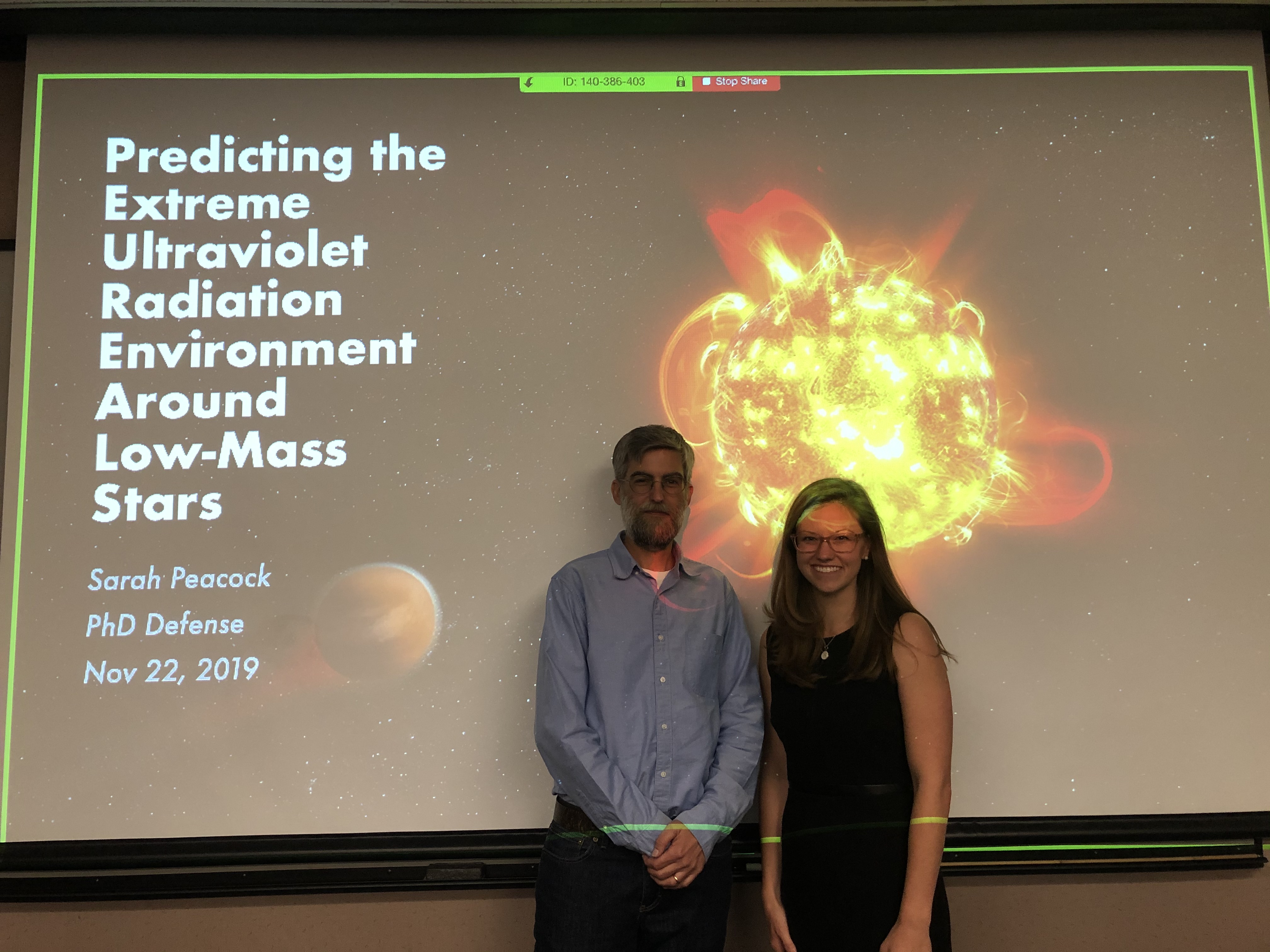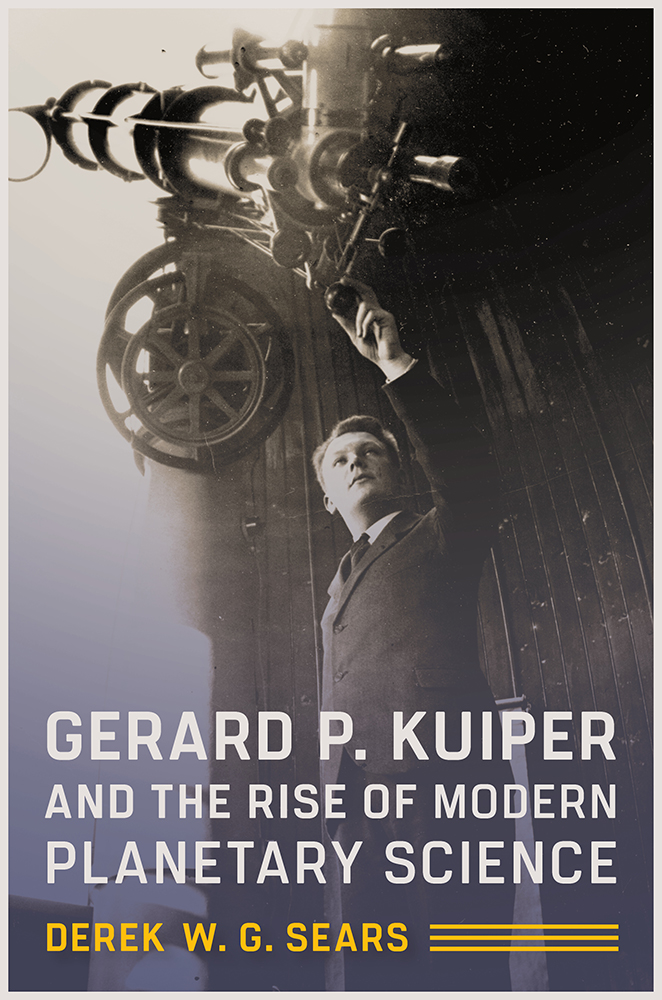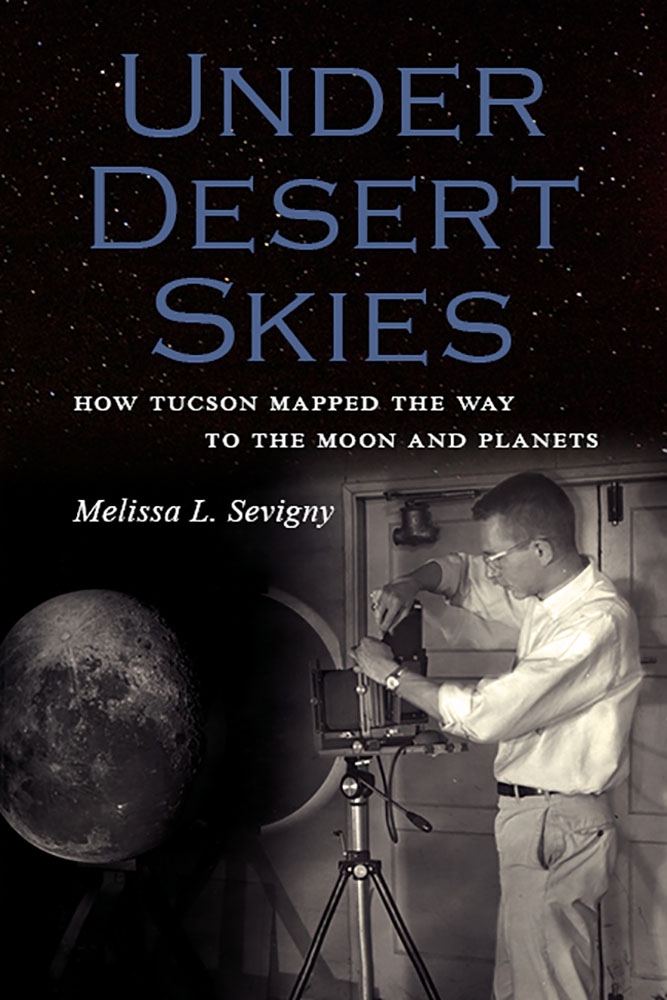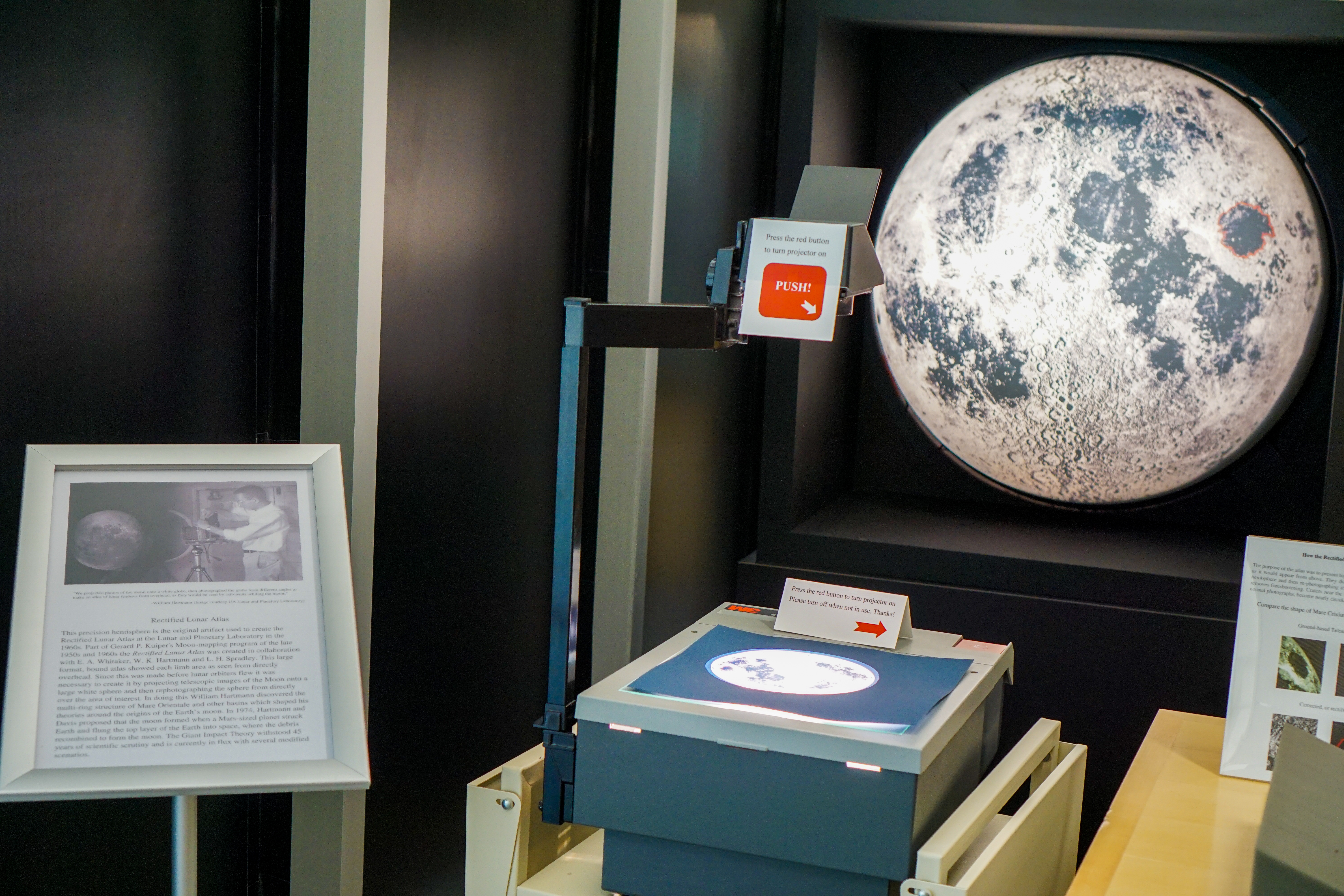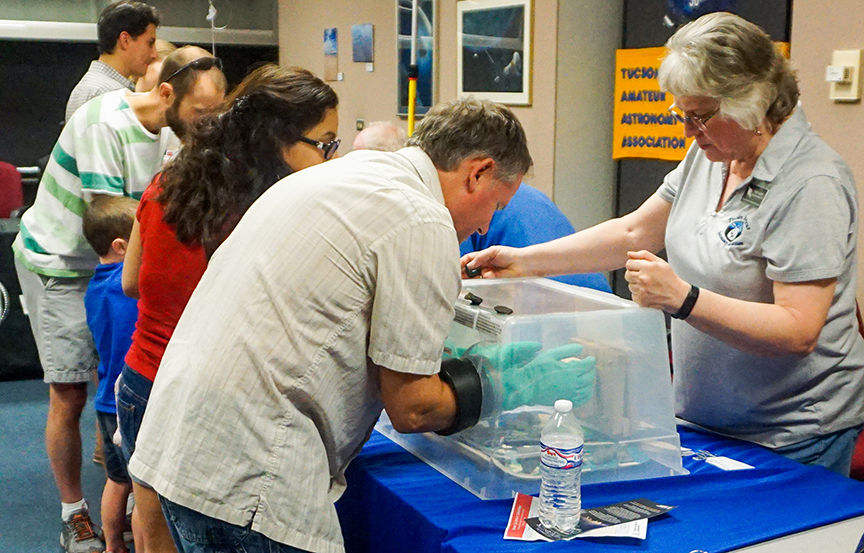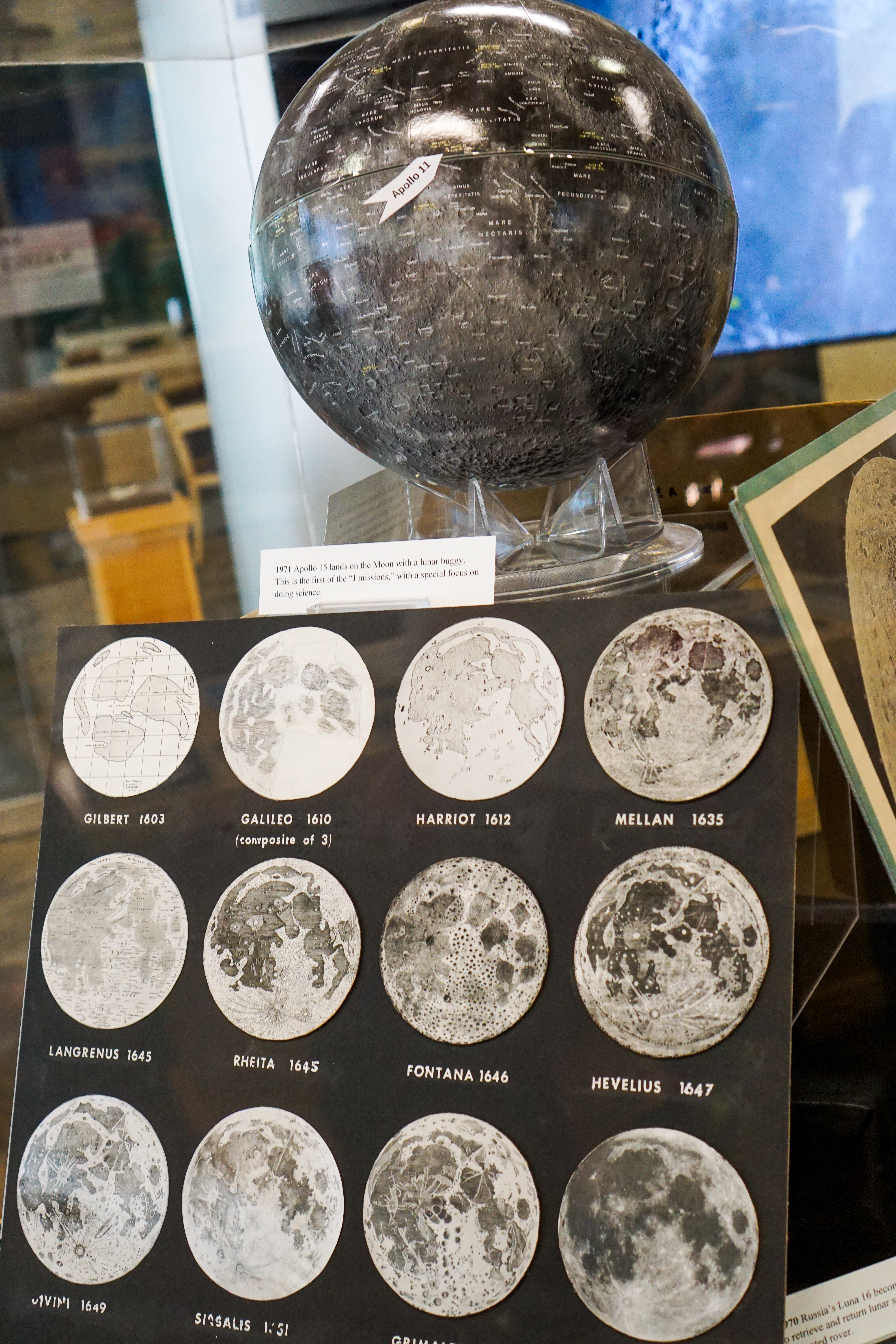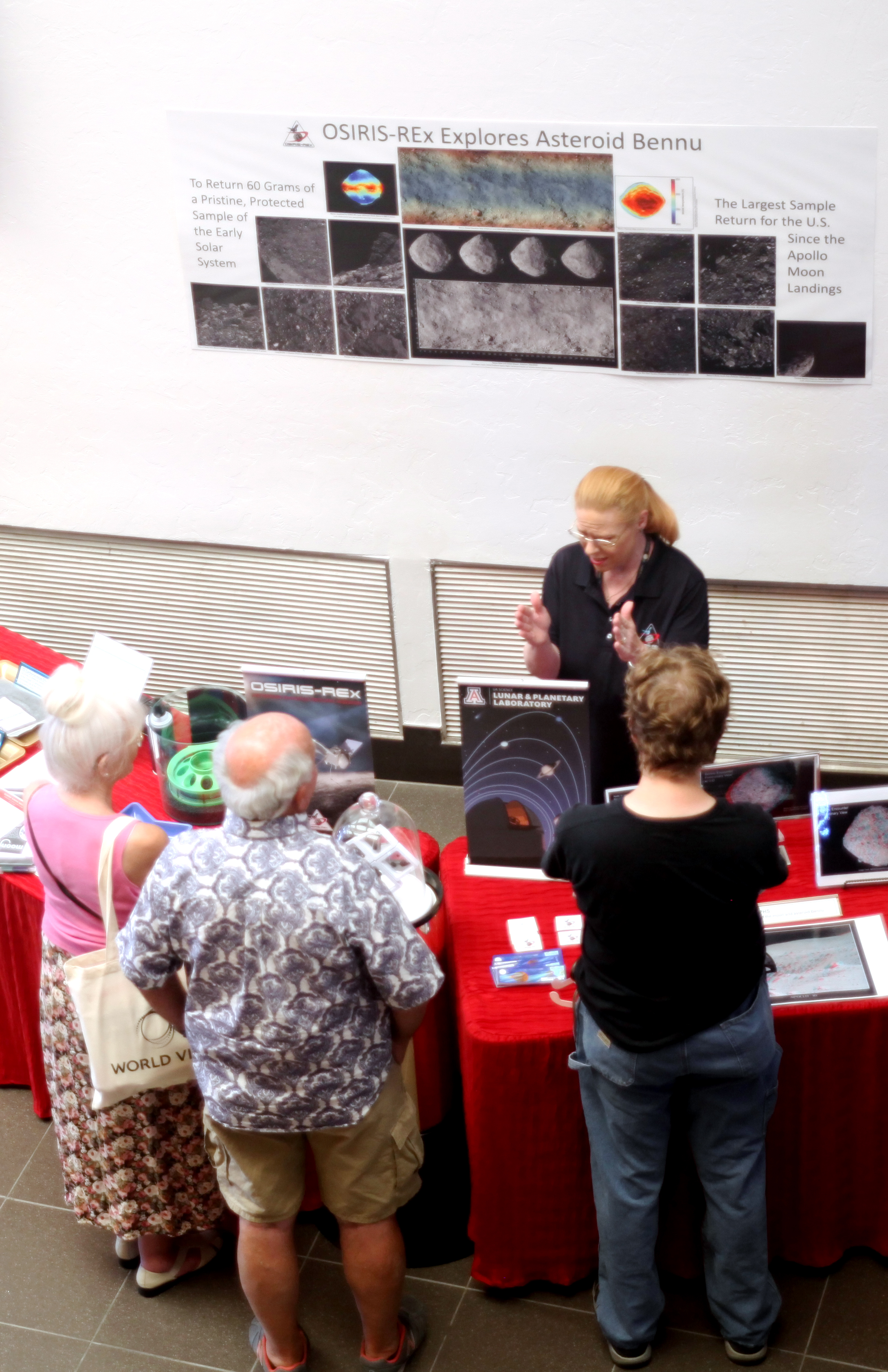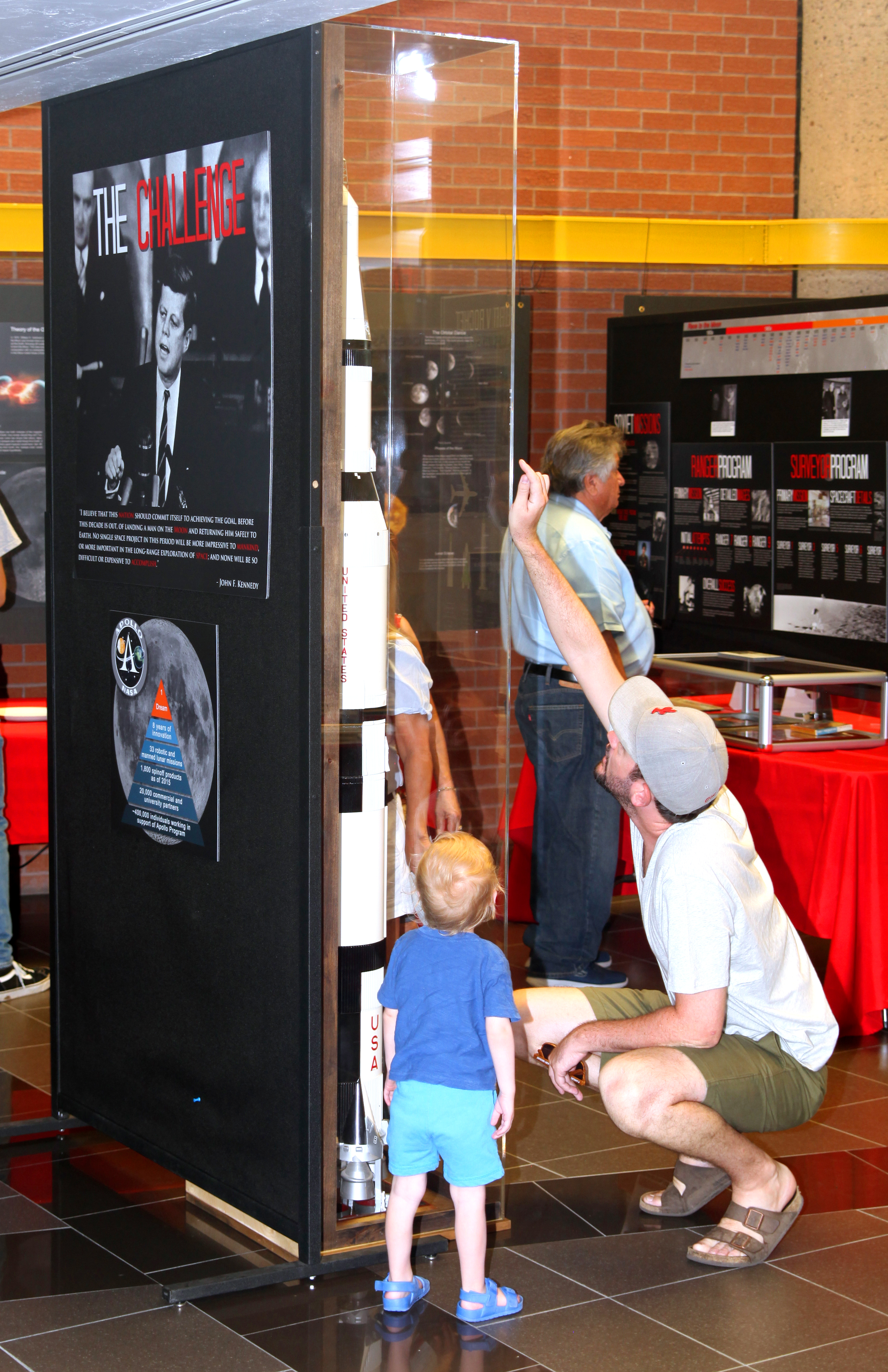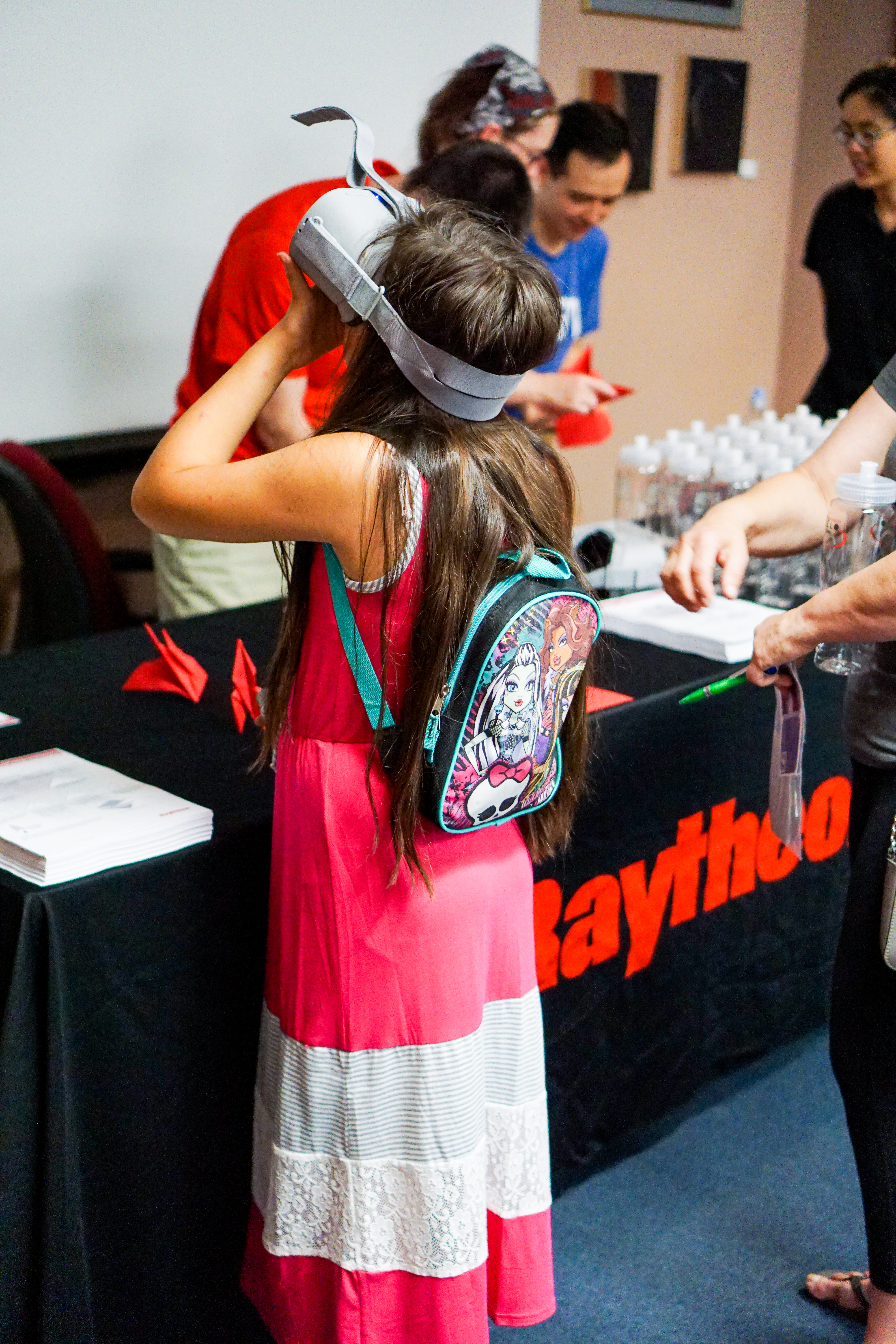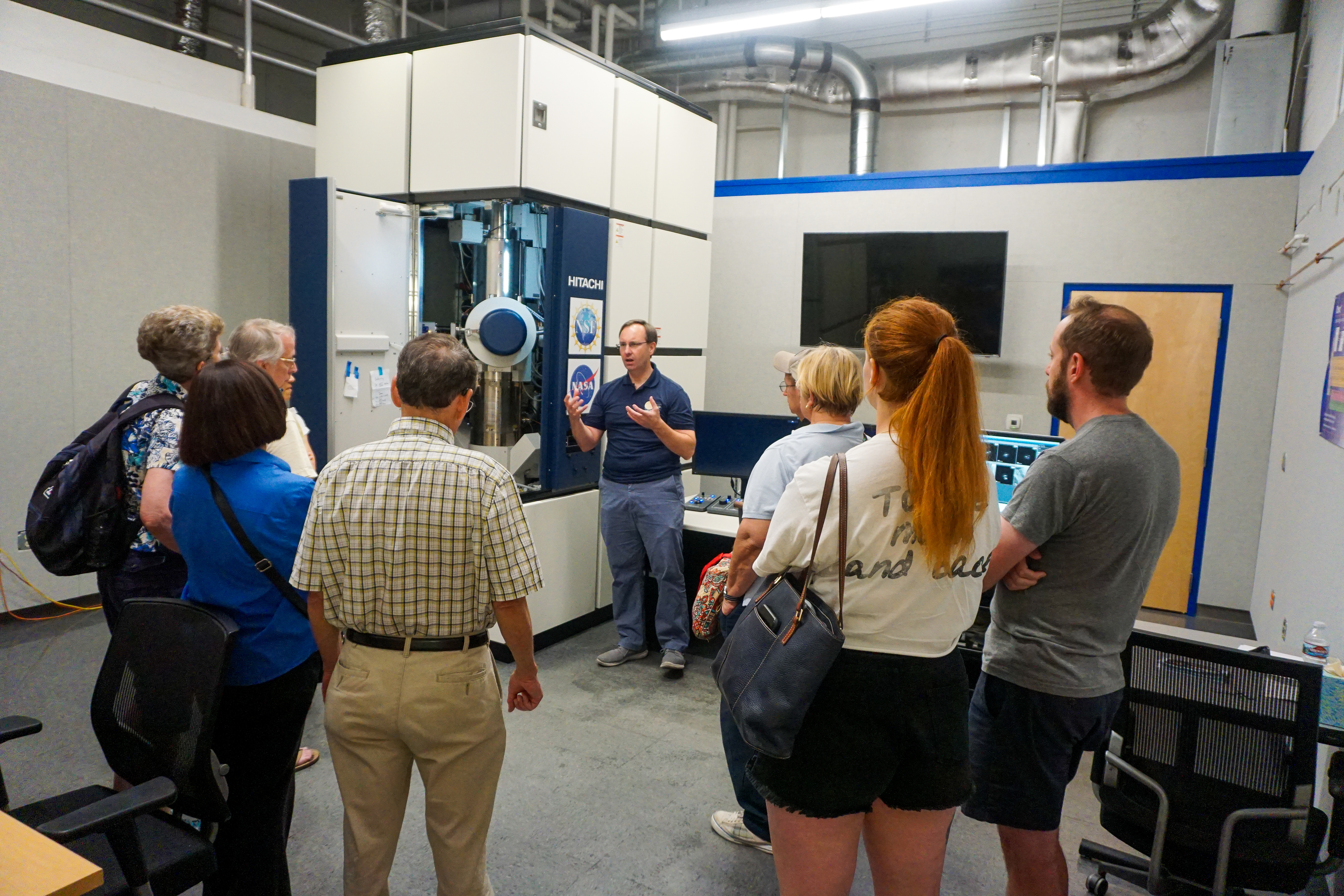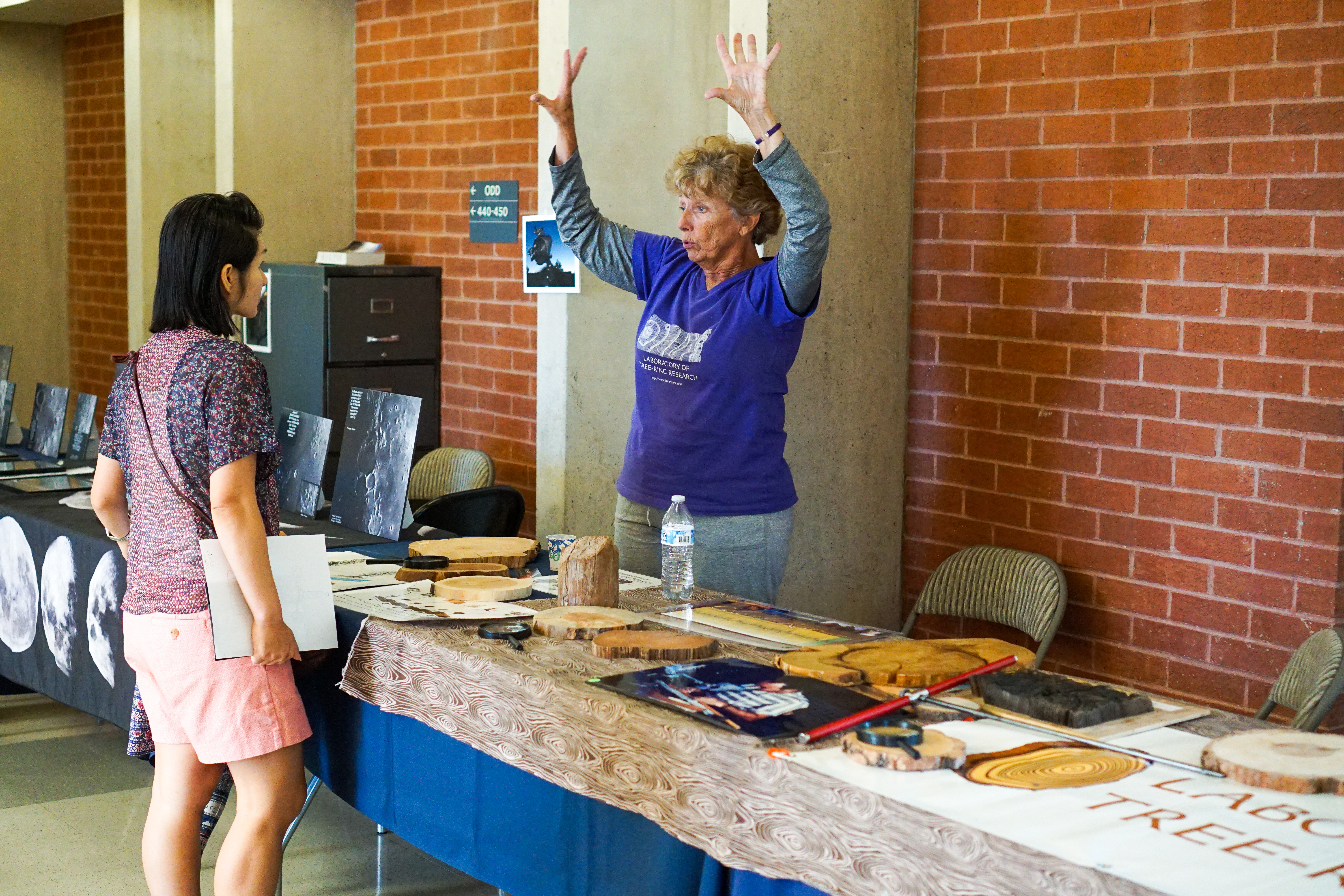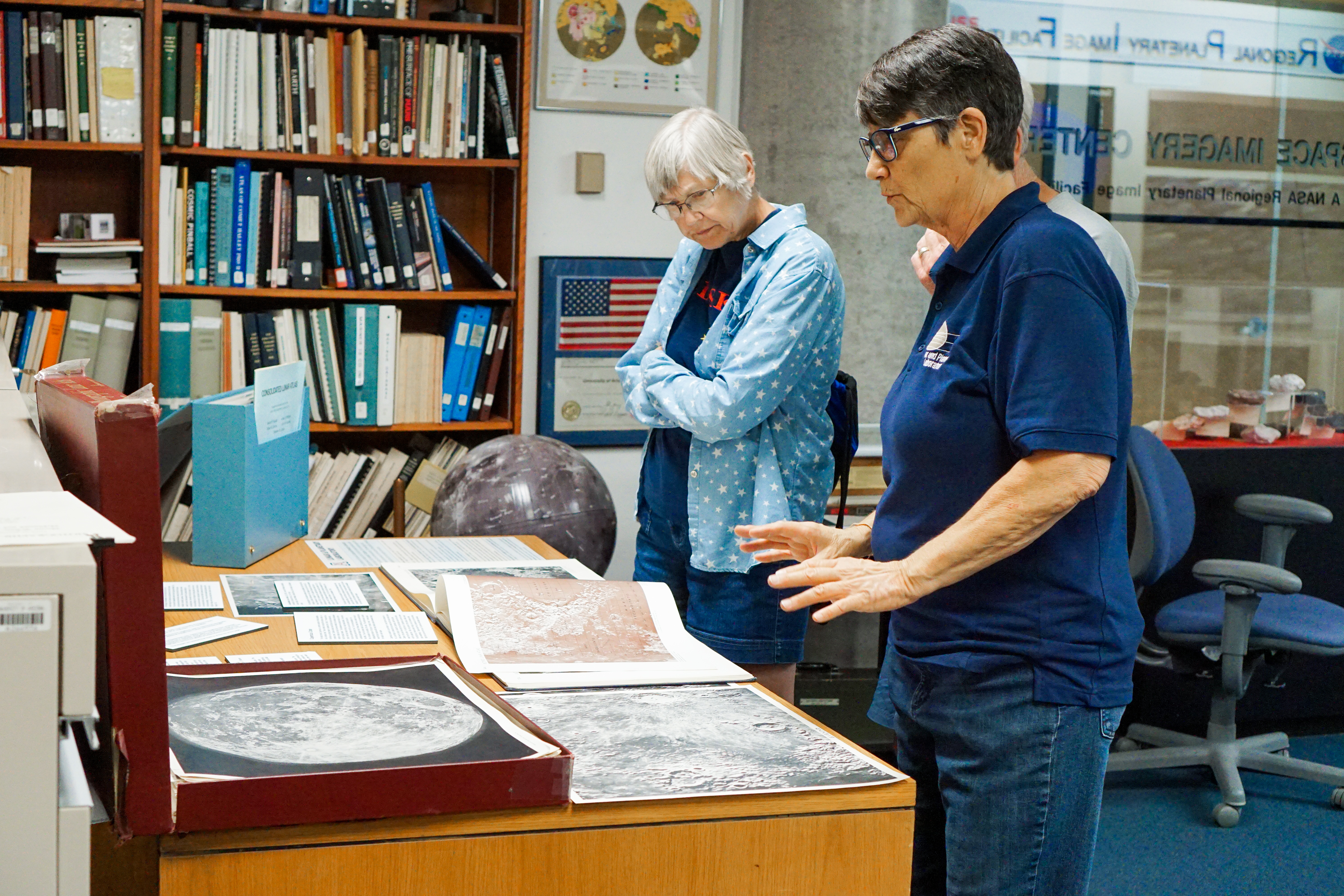by Allison McGraw
The 2019 Art of Planetary Science exhibit, held November 15-17 in the Kuiper Space Sciences building, hosted six new experiences and showcased over 200 works of space-themed art created by over 100 artists. The exhibit broke previous attendance records, welcoming 700 visitors over three days. The exhibit was organized to feature two main art categories—Data Art and Fine Art—creating a showcase of diverse work from artists within LPL as well as the national and international community of scientists and space artists. The 2019 exhibit included the event's first special highlight section called "Arizona Asteroid Art," which featured art inspired by the Psyche mission (Arizona State University) and OSIRIS-REx (University of Arizona).
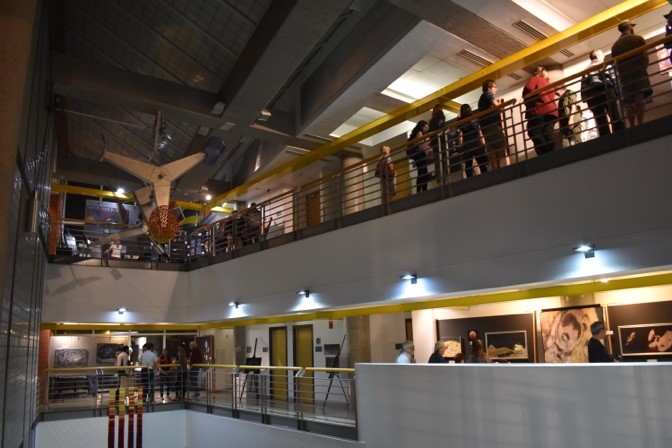
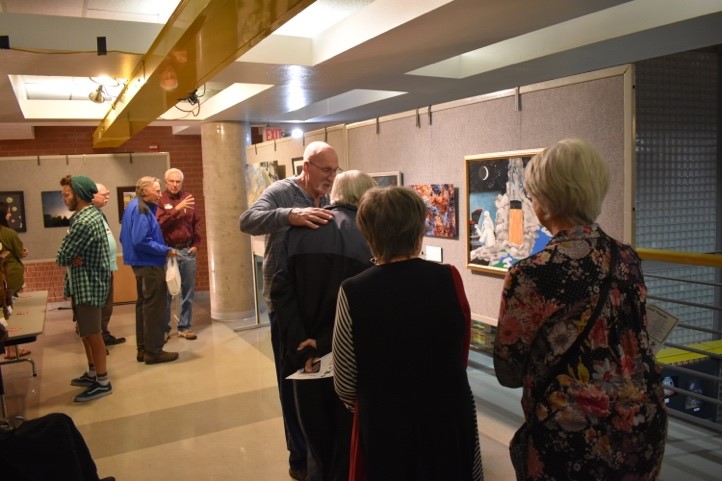
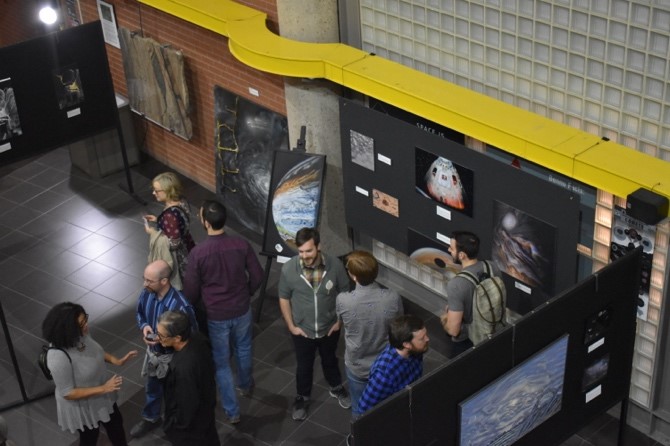
On opening night, visitors had the opportunity to talk with artists about their work and to rock out under the Moon Tree with music provided by local band Galactic Cactus. The Physics Factory bus was on scene to quiz the audience on their knowledge of women scientists. The University of Arizona undergraduate Astronomy Club hosted telescope viewing on the mall. As a special opening-night highlight, LPL Postdoctoral Research Associate Dr. Ali Bramson and Associate Staff Scientist Dr. Michael Sori hosted “Super Mario Explores the Solar System,” which showcased their series of Super Mario levels designed to evoke the surfaces and aqueous environments on various planets and moons in the solar system. The public was invited to play these levels on the big screen in Kuiper room 308; the activity was a big hit with small kids and big kids alike.
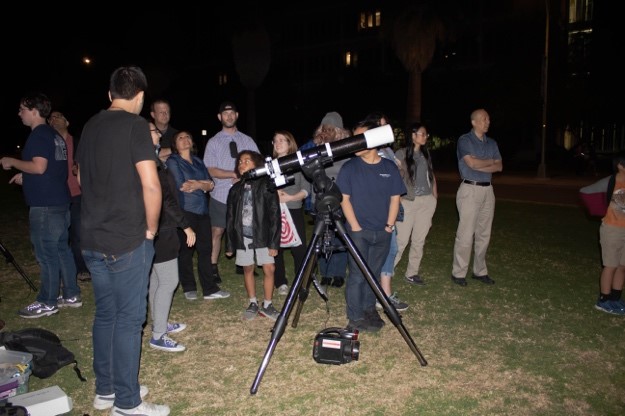
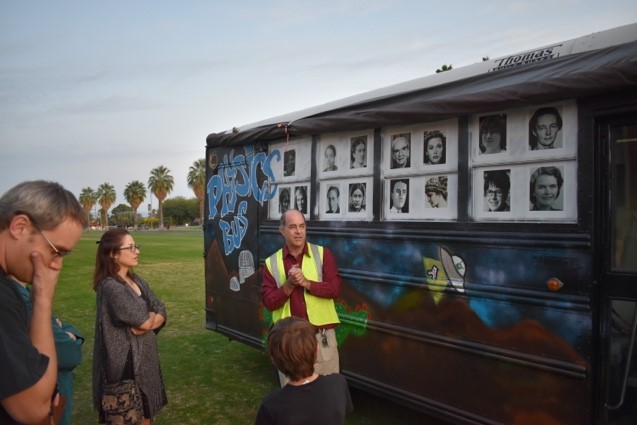
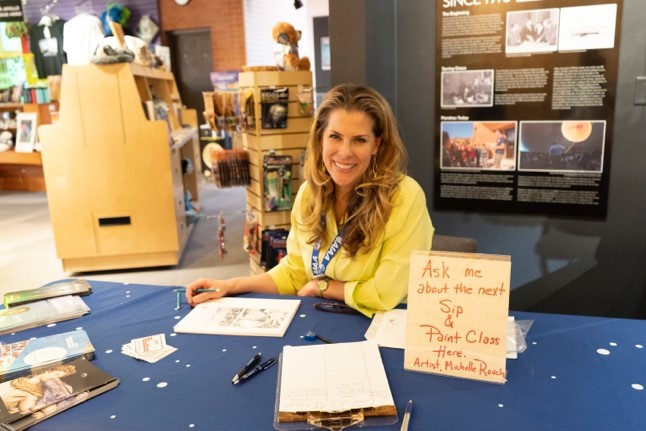

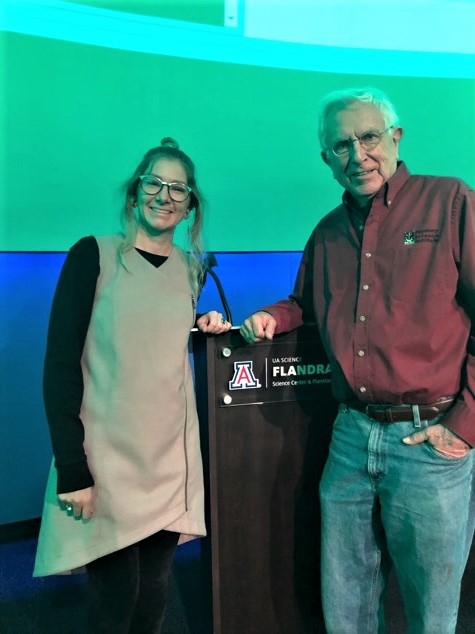 Featured on the second day of the exhibit was local space artist and aerospace engineer Michelle Rouch, who gave a presentation in the Flandrau Eos Planetarium Theater on the topic of technology as a tool rather than a pacifier. The event weekend concluded with a screening of the documentary Chesley Bonestell: A Brush With the Future at the Flandrau Eos Planetarium Theater. The film was introduced by LPL alumnus and space artist Dr. William Hartmann. Dr. Hartmann considered Bonestell to be one of his inspirations and eventually had the opportunity to meet him.
Featured on the second day of the exhibit was local space artist and aerospace engineer Michelle Rouch, who gave a presentation in the Flandrau Eos Planetarium Theater on the topic of technology as a tool rather than a pacifier. The event weekend concluded with a screening of the documentary Chesley Bonestell: A Brush With the Future at the Flandrau Eos Planetarium Theater. The film was introduced by LPL alumnus and space artist Dr. William Hartmann. Dr. Hartmann considered Bonestell to be one of his inspirations and eventually had the opportunity to meet him.
This year's organizers wish to thank all who contributed to making this year's Art of Planetary Science a great success. We hope to see you next year for The Art of Planetary Science 2020: Planetary Science & Science Fiction.
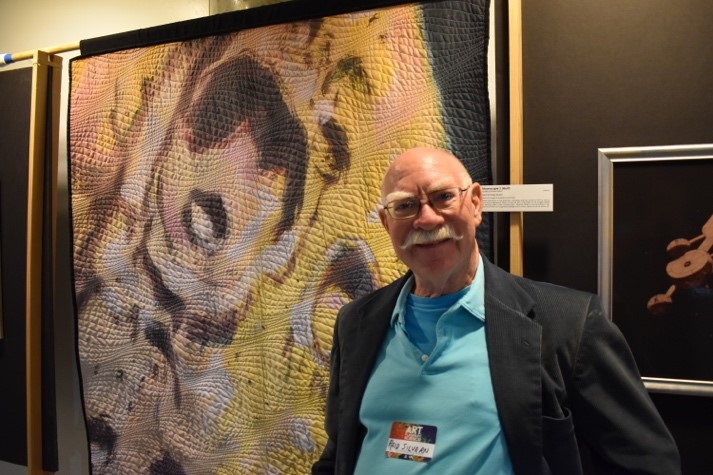
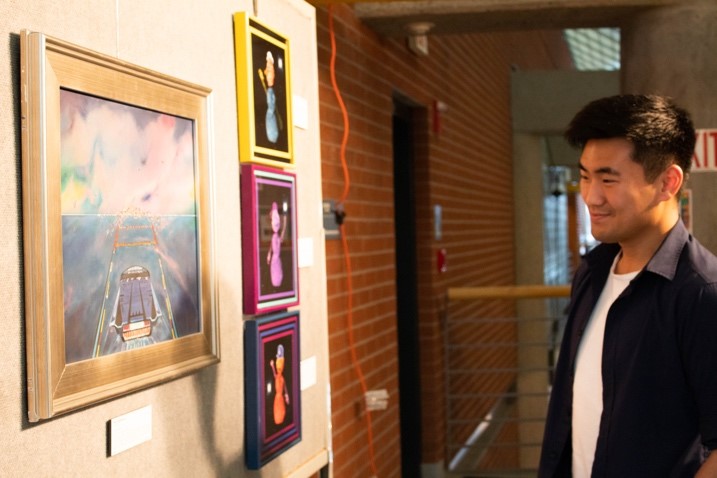

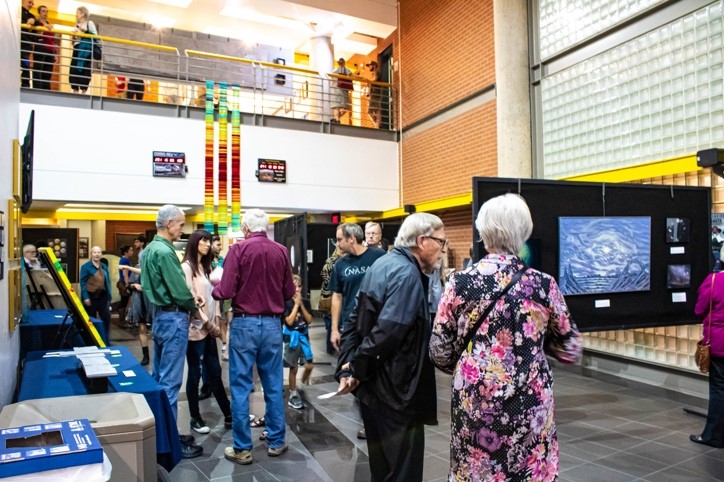


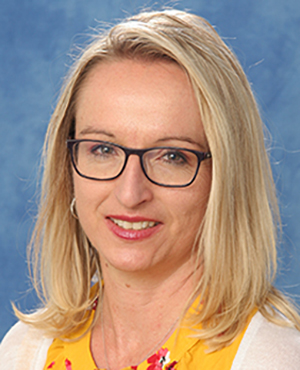 LPL academic advisor Amy Brenton received funding from a
LPL academic advisor Amy Brenton received funding from a 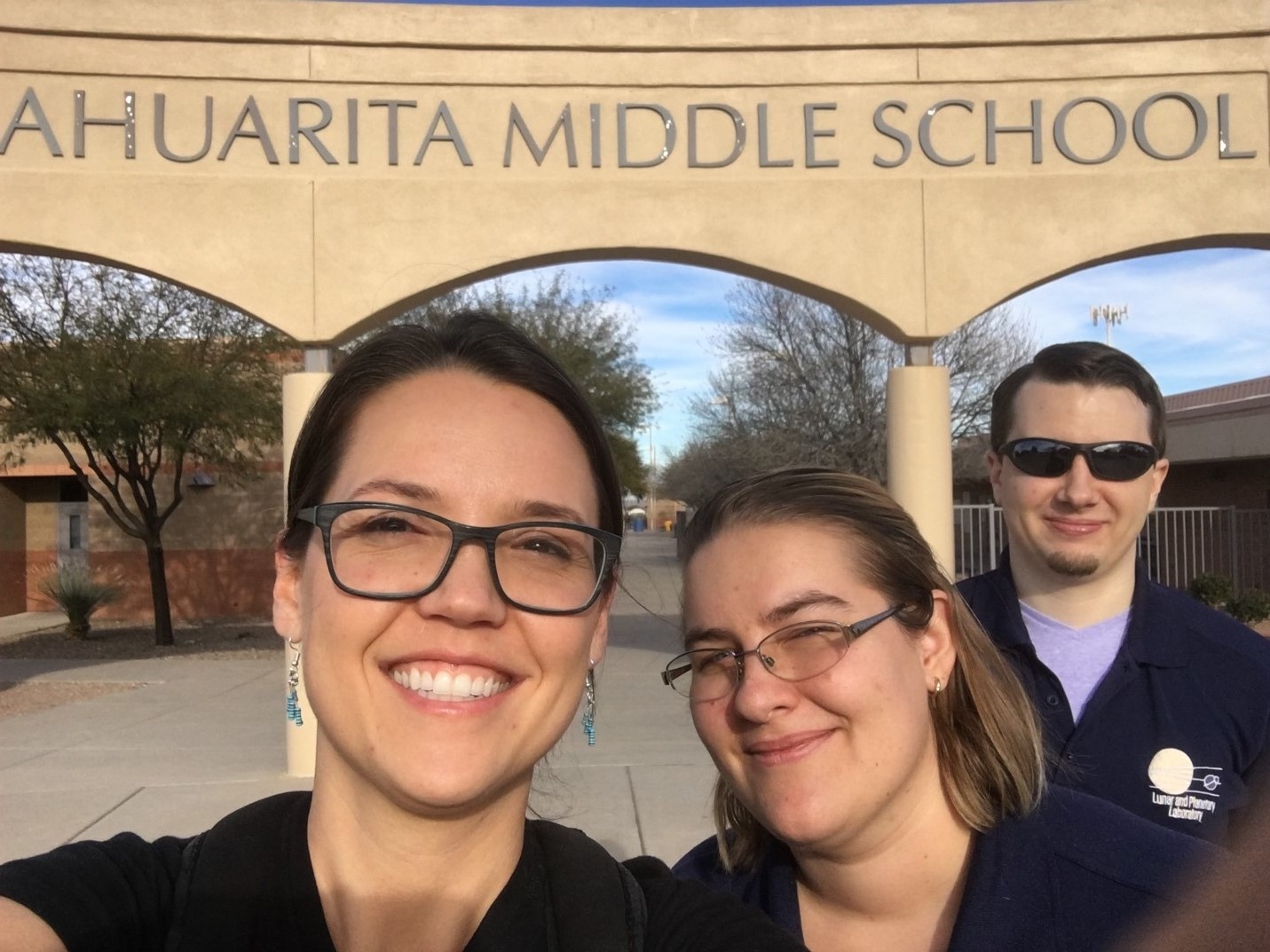
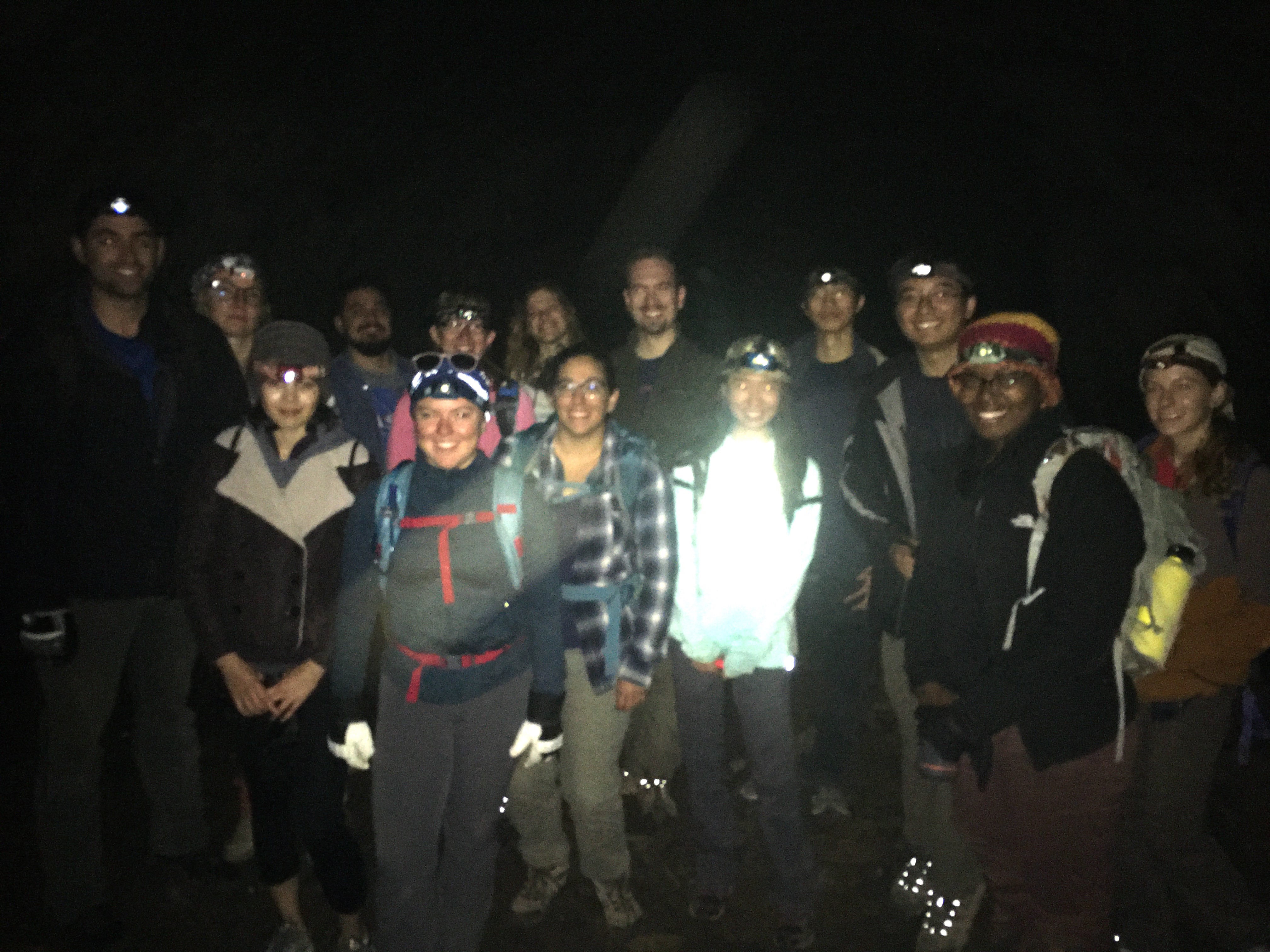
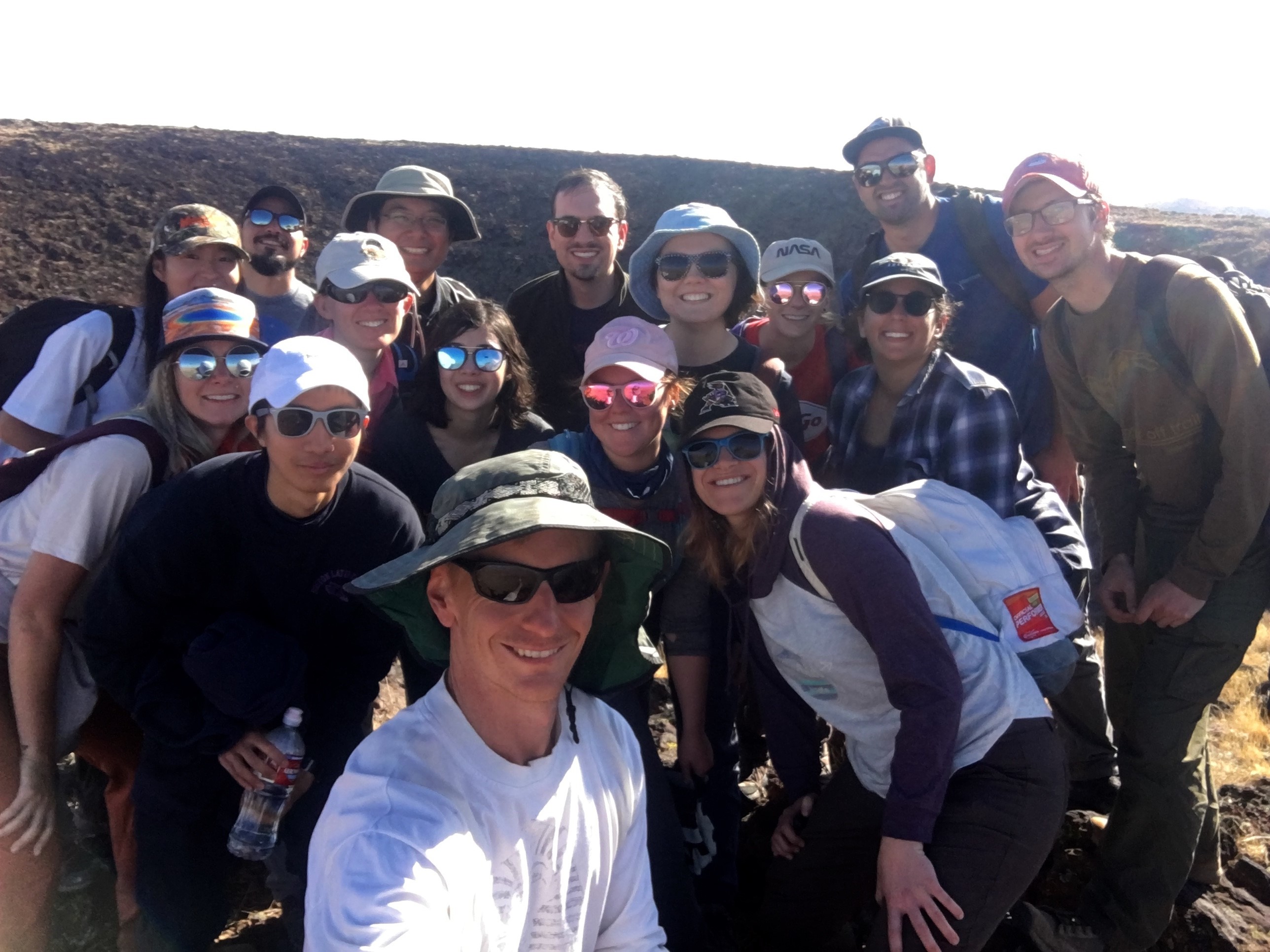

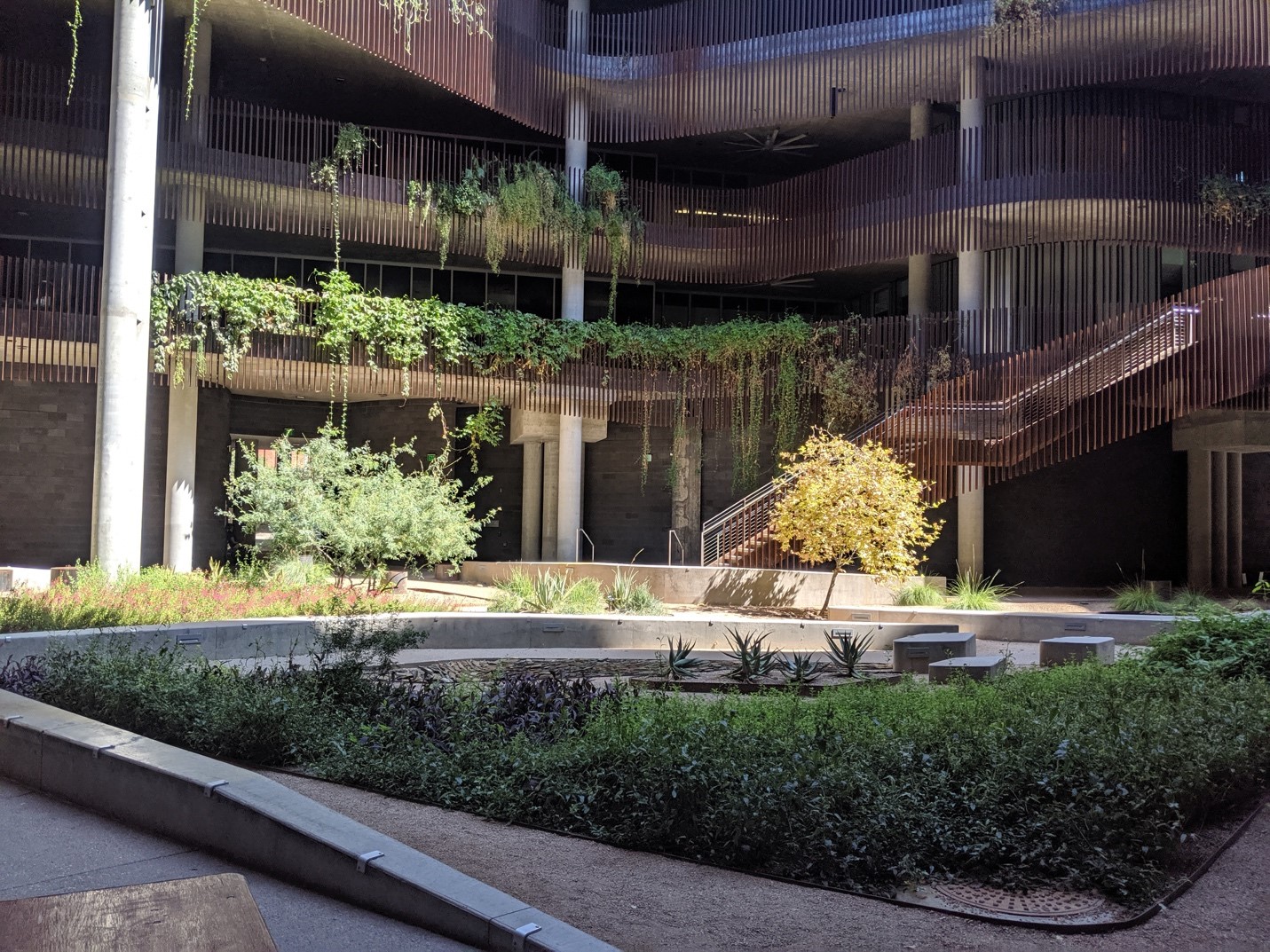
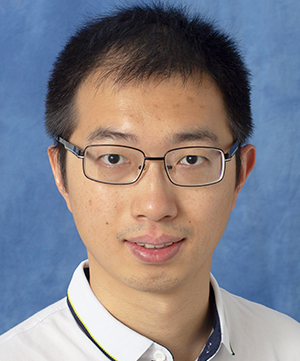 Chenliang Huang joined LPL in August 2019 as a Postdoctoral Research Associate working with
Chenliang Huang joined LPL in August 2019 as a Postdoctoral Research Associate working with 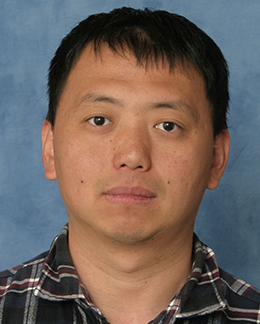 Fayu Jiang has been with LPL since March 2019, when he began work as a Postdoctoral Research Associate working with
Fayu Jiang has been with LPL since March 2019, when he began work as a Postdoctoral Research Associate working with 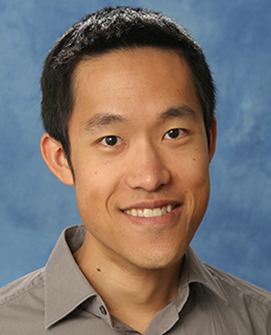 In May 2019,
In May 2019, 